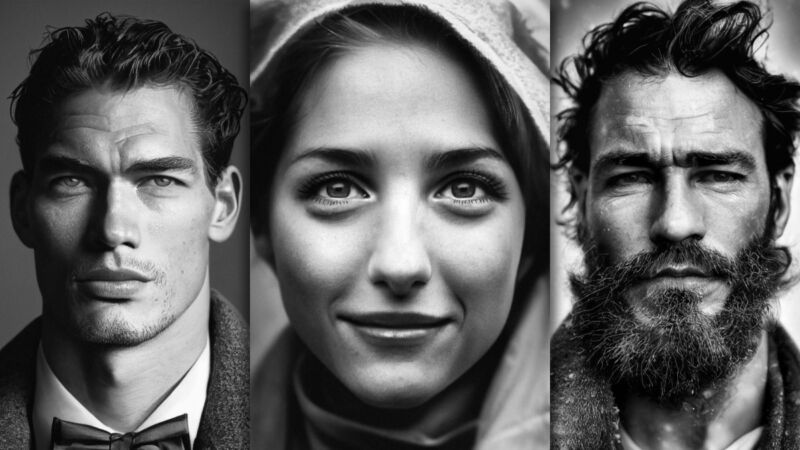
With over 26,000 followers and expanding, Jos Avery’s Instagram account has a trick up its sleeve. Even though it could surface to showcase spectacular photo portraits of persons, they are not actually people at all. Avery has been submitting AI-created portraits for the previous number of months, and as more followers praise his seemingly masterful pictures expertise, he has developed anxious about telling the truth.
“[My Instagram account] has blown up to practically 12K followers considering that Oct, a lot more than I anticipated,” wrote Avery when he 1st achieved out to Ars Technica in January. “Because it is where by I put up AI-created, human-completed portraits. Probably 95{9141b9fb46ef1fe08e850cdf18333f9b19cbfd00ac04c9f49c95b0632da46ee3}+ of the followers do not recognize. I’d like to occur clear.”
Avery emphasizes that while his images are not genuine images (apart from two, he says), they however demand a terrific offer of artistry and retouching on his component to pass as photorealistic. To create them, Avery in the beginning utilizes Midjourney, an AI-powered impression synthesis instrument. He then brings together and retouches the greatest pictures using Photoshop.
With Midjourney, any one can pay a membership fee for the privilege of creating art from text-primarily based descriptions, known as “prompts.” Midjourney’s creators taught the AI design how to synthesize images by displaying it millions of examples of artwork from other artists. It can create stunning photorealistic images that can idiot some individuals into thinking they’re actual photos, specially if retouched later.
-
“Stylish Cameron” by Jos Avery. Avery says two of these pictures had been taken by a digicam and the relaxation ended up AI-created, then retouched. Can you figure out which kinds are the genuine photos?
-
“Savanna Snow” by Jos Avery. Avery states two of these pictures were taken by a digital camera and the rest had been AI-generated, then retouched. Can you determine out which kinds are the serious pics?
-
“Jocose Jared” by Jos Avery. Avery says two of these photographs were being taken by a camera and the relaxation were being AI-created, then retouched. Can you determine out which ones are the authentic shots?
-
“Adept Albert” by Jos Avery. Avery suggests two of these photos were being taken by a digital camera and the relaxation had been AI-generated, then retouched. Can you figure out which types are the true shots?
-
“Generous Gwendolyn” by Jos Avery. Avery states two of these photographs have been taken by a camera and the relaxation were AI-produced, then retouched. Can you determine out which ones are the genuine shots?
-
“Cold Oleksiy” by Jos Avery. Avery states two of these photographs were being taken by a camera and the relaxation ended up AI-created, then retouched. Can you figure out which types are the true images?
At first an AI skeptic, Avery has develop into a change to the new art kind. This kind of function draws in great controversy in the artwork entire world, partly owing to moral concerns around scraping human-produced artwork without the need of consent. But thanks to that creative expertise built into the model, some of the most qualified AI-augmented practitioners can render imagery considerably far more vividly than if a human have been functioning on your own.
“I am honestly conflicted,” Avery reported when he approached Ars to notify his story. “My unique intention was to idiot people to showcase AI and then write an posting about it. But now it has develop into an creative outlet. My sights have modified.”
Painted into a digital corner
Soon immediately after Avery’s Instagram feed launched in Oct, beneficial comments about his bogus shots commenced pouring in. “All I can say is: Your art is someway distinctive, quite distinctive, also pretty important you are basically telling paramount tales to the viewer working with your cams,” wrote one commenter 4 months ago. “Environment novel highlights in up to date pictures IMHO! Your get the job done is a great delight to thoughts and soul.”
Up until finally extremely not long ago, when requested, Avery was both imprecise about how he developed the images or told individuals his performs have been actual photos, even going so significantly as to explain which form of camera he applied to create them (“a Nikon D810 with 24-70mm lens”). But guilt began to establish as his popularity grew.
